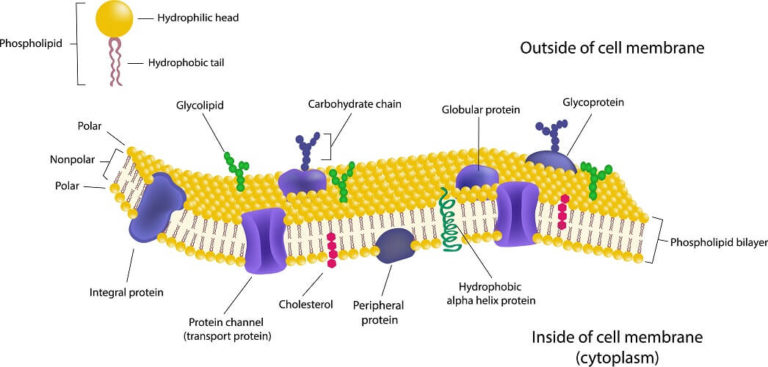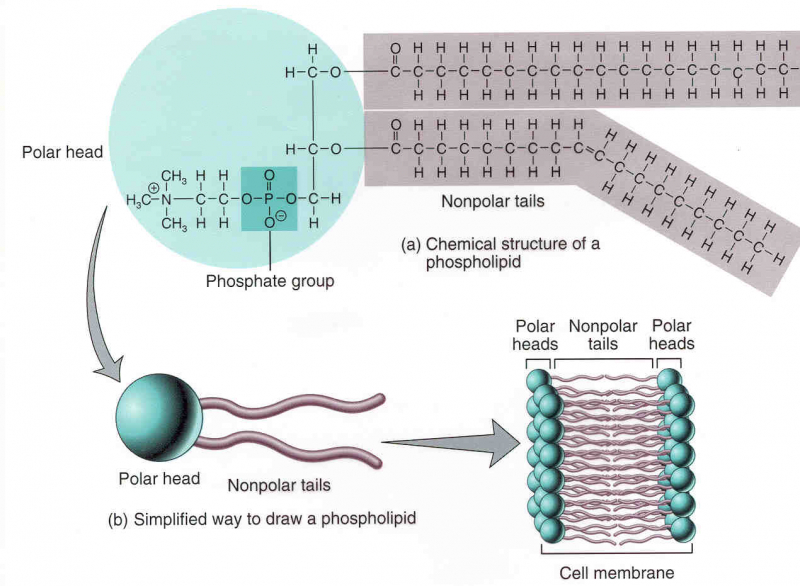It is made up of a double layer of phospholipids that separates the cell from the outside world.
It is composed of a double layer of phospholipids that serves as a barrier between the cell and the outside environment. The primary function of the cell membrane is to act as a barrier between the cell (which may also be a single-celled creature) and the outside environment; hence, the cell must have a structure that permits it to interact with both. The membrane of a cell is mostly composed of a double layer of phospholipids (fatlike, phosphorus-containing substances).
Each layer is made up of phospholipid molecules with a hydrophilic (water-loving) head and a hydrophobic (water-repelling) tail. The heads of those in the outermost layer face and interact with the watery external environment, whilst those in the interior layer point inward and interact with the watery cytoplasm of the cell. The area between the two layers is fluid repellent, which isolates the cell's interior from the outside environment. The cell membrane is semipermeable, allowing some chemicals to enter and exit the cell.







